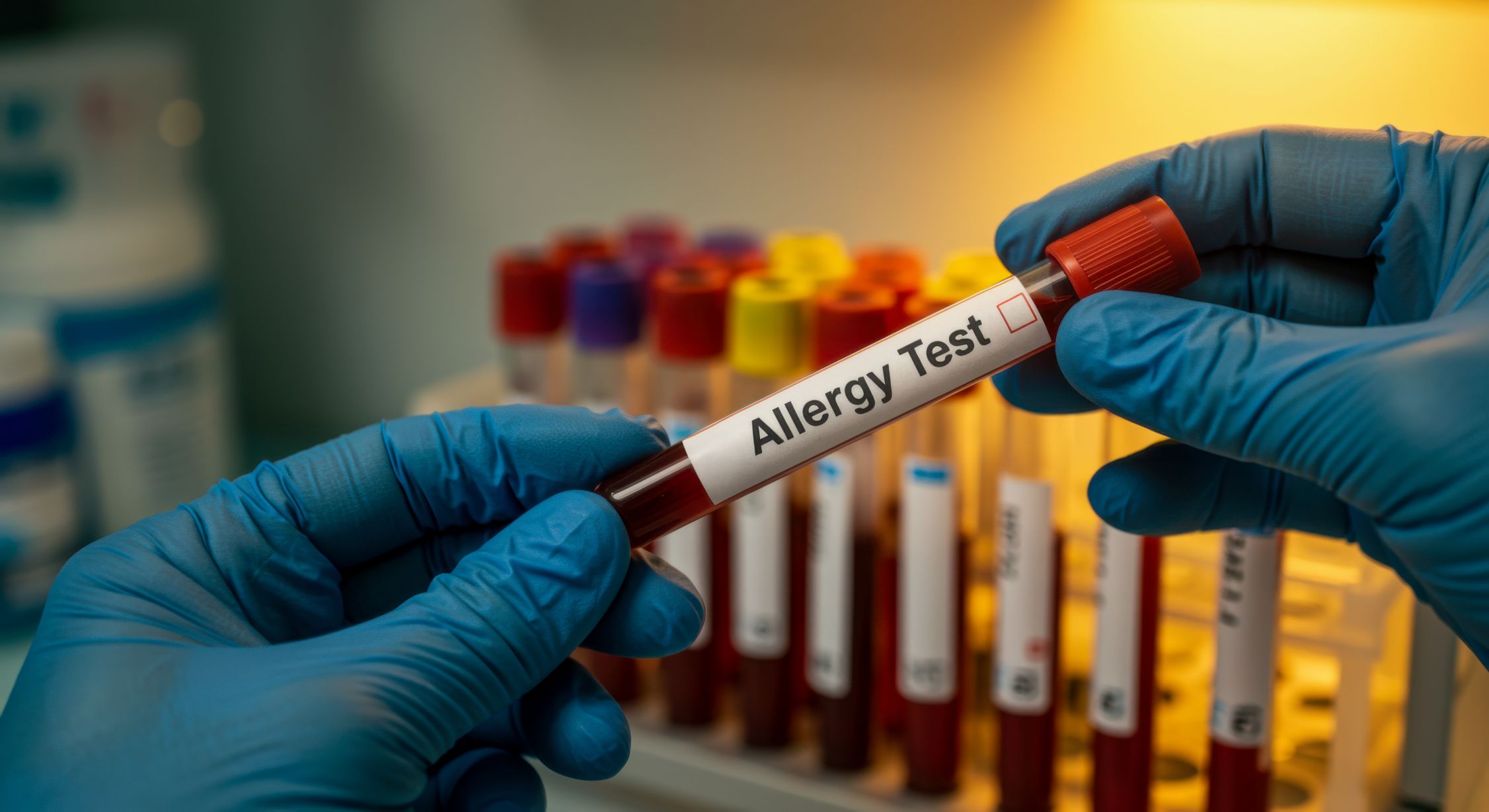Disposable gloves are meant to protect – but not every skin tolerates every material. In clinics, care facilities, laboratories or cleaning, skin reactions triggered by powder, latex or additives occur repeatedly. This article explains where allergy risks lie with disposable gloves, which symptoms can occur, and how affected individuals and facilities can protect themselves.
What Types of Allergies are there?
- Contact dermatitis (Type IV reaction)
→ a delayed skin reaction, triggered by chemical additives such as vulcanization accelerators, dyes, or residues from production. - Immediate-type allergy (Type I reaction)
→ allergic reaction to latex proteins in natural rubber, often with skin redness, itching, in severe cases even breathing difficulties.
Additionally, mechanically induced skin irritations can occur – for example, due to wearing gloves too tightly or excessive sweating.
The most Common Mistakes – and how to Avoid Them
- Wearing gloves for too long
→ Moisture can accumulate during prolonged wear, which stresses skin and material. - No change between activities
→ When changing patients, work areas, or work equipment: always change gloves as well! - Disinfection over gloves
→ Not allowed! Disposable gloves are not designed for hand disinfection – the material can be affected. - Ill-fitting sizes
→ Gloves that are too tight restrict mobility, those too large fit insecurely and tear more quickly. - Gloves without skin protection
→ Even with nitrile, frequent use can lead to skin irritation – proper care is essential.
Risk Factors in Daily Work
- Long wearing times without ventilation
- Ill-fitting glove sizes (too tight/too loose)
- Powdered gloves that release allergens into the air
- Lack of skin care (e.g., missing skin protection before and after shifts)
Particularly at risk are people with pre-existing skin conditions, frequent glove use, or existing allergies.
How Can You Reduce the Risk of Allergies?
- Use of powder-free gloves
- Avoidance of latex products
- Use of skin-friendly materials like nitrile
- Regular change of gloves to avoid moisture accumulation
- Skin care training as an integral part of occupational safety
Why BISON Focuses on Powder-Free Latex-Free
At BISON, we focus on powder-free nitrile gloves that are optimized for sensitive skin and manufactured in a closed process – without allergy-suspect additives wherever possible. This way, our products protect not only others but also our own team – day after day.
Find the right glove now
Further Reading
Skin protection care in everyday clinical practice – tips for professionals – Read now
Nitrile vs. Latex – the advantages and disadvantages compared – Read now
Sources further Information
BAuA: Skin protection in health services
Information on the prevention of occupational skin diseases
To BAuA website https://www.baua.de/DE/Home
DGUV: Recommendations for allergy risks from gloves
Part of Rule 112-995 – Focus on selection skin protection
To DGUV Rule https://publikationen.dguv.de/regelwerk/dguv-regeln/1356/benutzung-von-schutzhandschuhen
Information service of the BVDD (Professional Association of German Dermatologists)
Expert information on contact eczema and type I allergies https://www.bvdd.de

